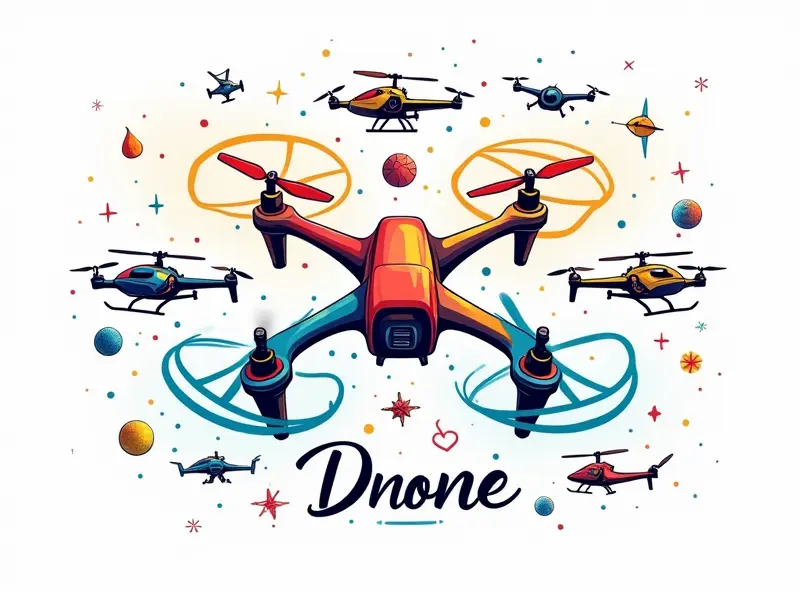Drone sensor issues

Understanding Drone Sensor Failures
Drone sensor issues can significantly impact the reliability and accuracy of your aerial operations. Understanding these failures is crucial for maintaining a high level of operational efficiency. Common problems include GPS drift, compass errors, and faulty IMU (Inertial Measurement Unit) readings.
Symptoms of Sensor Failures
- GPS Drift: The drone's position on the map does not match its actual location.
- Compass Errors: Incorrect heading or direction, leading to erratic flight patterns.
- IMU Malfunction: Inaccurate altitude readings and unstable flight.
Preventive Maintenance for Drone Sensors
Maintaining your drone's sensors is essential for preventing issues before they occur. Regular cleaning, calibration, and inspection can help ensure optimal performance.
Cleaning Procedures
- Dust Removal: Use compressed air to remove dust from sensor lenses.
- Liquid Residue: Clean with a soft cloth dipped in isopropyl alcohol.
How to Calibrate Your Drone's Sensors Properly
Proper calibration ensures that your drone operates accurately and efficiently. Follow these steps for each sensor type:
Calibrating the GPS Module
- Select a Flat Surface: Ensure you are in an open area with clear sky.
- Follow Manufacturer Instructions: Use specific calibration procedures provided by the drone manufacturer.
Calibrating the Compass
- Avoid Magnetic Interference: Stay away from metal objects and electronic devices.
- Use Calibration App: Many drones come with apps to assist in compass calibration.
Common Causes of Drone Sensor Issues
Several factors can cause sensor issues, including environmental conditions, hardware malfunctions, and software glitches. Identifying these causes is key to addressing the problems effectively.
Environmental Factors
- Magnetic Interference: Nearby metal objects or electronic devices can disrupt compass readings.
- Snow/Ice Buildup: Accumulation on sensors can affect accuracy and performance.
Solving GPS and Compass Drift Issues
GPS drift and compass errors are common issues that can be frustrating to deal with. Here’s how you can address them:
Addressing GPS Drift
- Re-calibrate the GPS Module: Follow manufacturer instructions for re-calibration.
- Check Firmware Updates: Ensure your drone's firmware is up-to-date.
Tackling Compass Drift
- Perform a Hard Reset: Clear the compass memory and start fresh.
- Use Calibration Tools: Utilize calibration apps to correct heading issues.
Quick Fixes for Faulty Drone Sensors
In some cases, quick fixes can resolve sensor issues without requiring extensive troubleshooting. Here are a few immediate steps you can take:
- Reboot the Drone: A simple restart might clear temporary glitches.
- Inspect Connections: Ensure all cables and connectors are securely attached.
Troubleshooting Drone Sensor Problems Easily
Effective troubleshooting involves a systematic approach to identify and resolve issues. Here’s how you can troubleshoot common sensor problems:
Step-by-Step Troubleshooting Guide
- Identify the Problem: Determine which sensor is malfunctioning.
- Check for Errors: Look for error messages or warnings in the drone’s interface.
- Perform Basic Maintenance: Clean and calibrate sensors as needed.
Maintaining Optimal Drone Sensor Performance
To keep your drone's sensors performing at their best, regular maintenance is essential. Follow these tips to ensure optimal performance:
Scheduled Inspections
- Monthly Checks: Regularly inspect sensors for signs of wear or damage.
- Analyze Data Logs: Review logs for any anomalies that may indicate issues.
Preventing Sensor Errors in Drones
Avoiding sensor errors starts with proactive measures. Here are some strategies to prevent common issues:
Environmental Controls
- Store Properly: Keep drones away from magnetic fields and extreme temperatures.
- Use Protective Cases: Shield sensors from dust, moisture, and physical damage.
Understanding Drone Sensor Compatibility
Sensor compatibility is crucial for ensuring seamless operation. Make sure your drone’s hardware and software are compatible to avoid issues:
Compatibility Checklist
- Check Firmware Version: Ensure firmware matches the sensor specifications.
- Verify Hardware Compatibility: Confirm that sensors are designed for your specific drone model.
Common Failures in Drone Flight Sensors
Flight sensors play a critical role in maintaining stable and accurate flight. Here are some common failures to watch out for:
Altitude Sensor Malfunction
- Symptoms: Inconsistent altitude readings, unstable hover.
- Solution: Clean sensor contacts and re-calibrate if necessary.
Magnetometer Errors
- Symptoms: Incorrect heading, erratic flight patterns.
- Solution: Perform a hard reset or use calibration tools to correct the compass.
Conclusion
Maintaining and troubleshooting drone sensors is essential for ensuring reliable and accurate aerial operations. By understanding common issues, performing regular maintenance, and following proper calibration procedures, you can keep your drone in top condition. Stay proactive with environmental controls and compatibility checks to prevent sensor errors from occurring.

